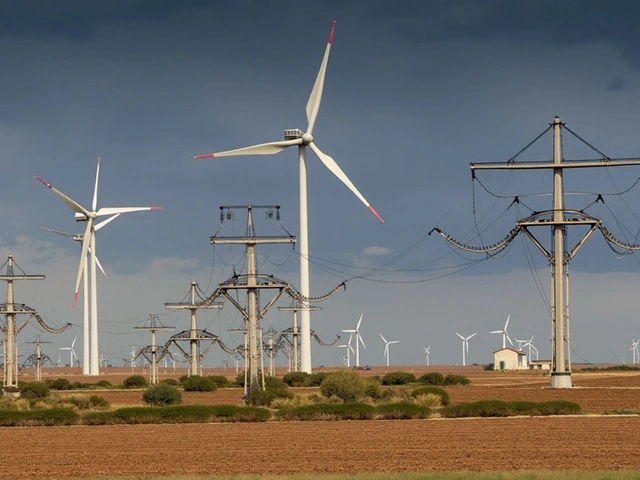Introduction to NERC's New Reliability Standards
The North American Electric Reliability Corporation (NERC) has taken a decisive step forward in addressing the challenges presented by extreme weather conditions to the nation's power grid. On December 10, 2024, NERC's board of trustees approved two new standards, aiming to enhance the reliability of the electrical power system amidst increasingly volatile weather patterns. The approval of these standards indicates NERC's proactive approach to maintaining grid stability, critical at a time when climate change is intensifying the frequency and severity of weather events.
Understanding TPL-008-1: Enhancing Preparedness for Extreme Weather
The first of these standards, TPL-008-1, focuses specifically on preparing planning coordinators and transmission planners for the impacts of extreme weather events, notably extreme heat and cold. This standard establishes a comprehensive framework consisting of 11 requirements that necessitate periodic studies assessing the wide-area impacts of such weather conditions on the Bulk-Power System. This initiative is vital as it mandates a long-term perspective that's often missing in short-term operational assessments. For power providers, this ensures that they're not caught off-guard by sudden environmental changes. These studies will influence everything from infrastructure investment to emergency response strategies, allowing for more robust planning and mitigative measures against potential disruptions.
Decoding BAL-007-1: Ensuring Energy Reliability
In concert with TPL-008-1, the BAL-007-1 standard requires balancing authorities to conduct near-term energy reliability assessments. This involves meticulously analyzing forecasted or assumed demand profiles, current resource capabilities, and existing operational constraints. With the rise of renewable resources, understanding energy transfers and limitations with neighboring balancing authorities has become integral. This standard encourages a more nuanced approach to managing the complexities of an interconnected power grid, ensuring that energy reliability remains a priority even as demand surges during peak heating and cooling periods.
Additional Modifications: Bolstering Security and Risk Identification
Apart from these new standards, modifications have been made to existing ones. For example, the CIP-003-11 modification focuses on fortifying the security of small distributed resources, recognizing the necessity of robust cybersecurity protocols. Meanwhile, updates to CIP-002-8 seek to enhance risk identification processes, ensuring quicker and more precise recognition of potential threats to the grid's integrity. TOP-003-7 revision ensures that balancing authorities are equipped with essential data for conducting their energy reliability assessments, facilitating a more comprehensive understanding of potential grid vulnerabilities.
The Approval Process with FERC
All these standards and modifications have been filed with the Federal Energy Regulatory Commission (FERC), where they await regulatory approval. The process underscores the rigorous checks and balances in place to ensure that any operational change meets the highest standards of efficacy and safety. The collaborative effort between NERC and FERC reflects a partnership dedicated to the continual evolution of the resiliency framework, addressing both current and emerging threats to the power supply.
Future Initiatives: Data Collection and Winterization
NERC has also committed to the collection and analysis of generator data specifically for assessing winterization efforts. This initiative is slated to begin with an annual informational filing commencing October 1, 2025. The data-driven approach aims to identify areas for improvement in winter preparedness, an area that gained substantial attention after winter storm events exposed vulnerabilities in some systems that had previously been overlooked.
The Role of Leadership in Grid Reliability
NERC Board Chair Ken DeFontes has emphasized the crucial nature of continuous progress in meeting the challenges posed by extreme weather. Under his leadership, NERC's board not only acknowledges past weather-related disruptions but also takes preemptive actions to safeguard against future occurrences. This forward-thinking strategy is essential as the organization seeks to establish a grid that is adaptive and robust, capable of withstanding the pressures of future challenges.
Conclusion
The adoption of these standards signifies a landmark moment in power grid reliability efforts. By focusing on extreme weather preparedness and bolstering system security, NERC is paving the way for a more resilient and reliable power system. This concerted effort ensures that as weather patterns continue to shift, the electrical infrastructure is well-positioned to manage and mitigate associated risks. As these changes await final approval from FERC, stakeholders across the industry remain resolute in their commitment to a secure and reliable future.



Leave a Comments